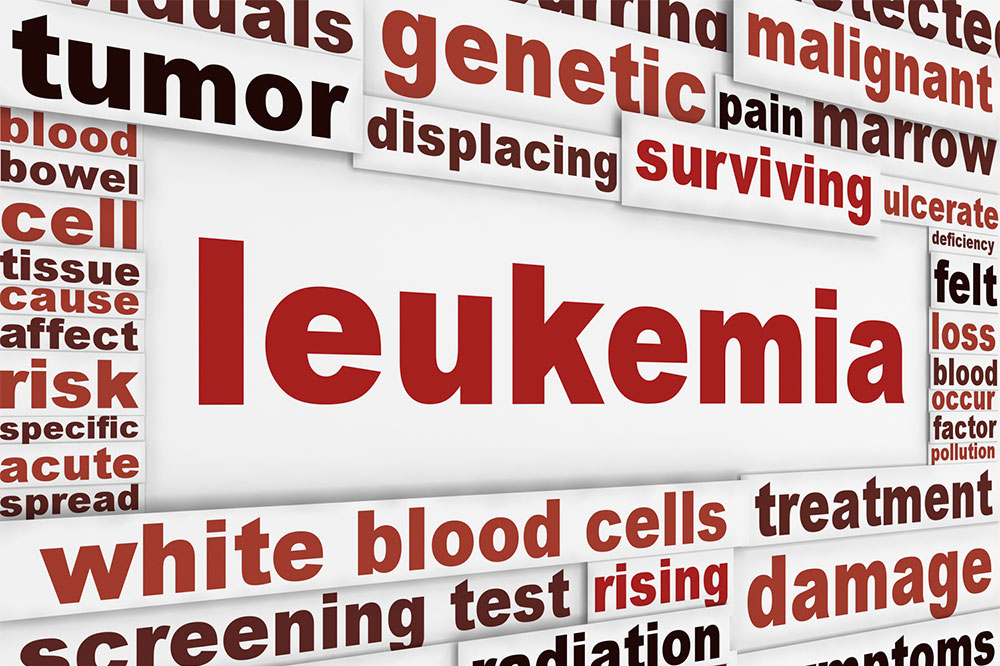Causes and Symptoms of Leukemia
Leukemia, a type of cancer, affects the functions of the body’s blood-forming tissues, severely impacting the bone marrow and lymphatic system. It usually begins in the bone marrow and causes many abnormal white blood cells, called blasts or leukemia cells, to develop. In the initial stages, the symptoms might go unnoticed, so it is essential to recognize their signs early and consult a doctor for an official diagnosis and treatment course.

How does leukemia form?
According to studies, multiple environmental and genetic factors cause the formation of leukemia cells. However, the cause or reason for leukemia has not yet been discovered. Many experts believe that leukemia occurs when the blood cells experience mutations in their DNA. While the normal DNA of a cell instructs it to grow and die at an accurate time, the DNA of the cells affected by leukemia continues growing and dividing and does not die.
This, in turn, causes the production of uncontrollable abnormal blood cells that rise in numbers. Eventually, the abnormal cells outnumber the healthy normal cells in the bone marrow. Accordingly, the number of healthy platelets and red and white blood cells deteriorates in the blood, raising the level and symptoms of leukemia.
Causes of leukemia
While the exact cause of leukemia is still unknown, some risk factors that may cause the development of blood cells with leukemia include:
Genetic disorders
Genetic disorders, such as Down syndrome, could pose a great risk of leukemia. Genetic disabilities often pave the way for the development of leukemia.
Cancer treatment
Sometimes, people who get cancer treatment in the form of chemotherapy and radiation therapy, for other types of cancer are prone to developing leukemia.
Family history
In the family, if someone develops leukemia, the generations that come after may also have a chance of having it.
Chemical exposure
Certain chemicals, such as benzene, when it comes in contact with a person for a prolonged time, could cause leukemia.
Apart from this, if a pregnant lady is diagnosed with leukemia, the child might also develop leukemia. Sometimes, the T-lymphotropic virus and other kinds of viruses also give way to the formation of leukemia-affected cells in the body. It is, therefore, advised to visit the doctors at the early signs of leukemia.
Leukemia symptoms
As we have read above, the symptoms and types of symptoms vary from person to person. While some may start experiencing the symptoms of leukemia in the early stages, others may not feel any of them or get diagnosed for years while leukemia cells multiply within them.
Common leukemia symptoms include:
Pain or tenderness in the bones
Pale skin
Excessive sweating
Fever or chills
Fatigue or weakness
Unexplainable weight loss
Enlarged liver or spleen
Anemia or flu-like symptoms
Frequent infections that go to severe lengths
Tonsils or soreness in the mouth
Easy bruising or bleeding
Recurrent nosebleeds
Pneumonia or diarrhea
Little red spots on the skin
Types of leukemia
Based on the progression of the leukemia cells, there are two types of leukemia, which are:
Acute leukemia
In this, the abnormal blood cells are immature and unable to carry out the functions to be conducted by the blood cells. They rapidly multiply, worsening the disease with time.
Chronic leukemia
Chronic leukemia either causes the production of too many cells or few cells. The affected blood cells work fine for a long period and show no early symptoms, making it difficult to notice for years.
Based on the types of blood cells that are affected, the two types of leukemia include:
Lymphocytic leukemia
Leukemia that affects the lymphoid cells and the immune system is known as lymphocytic leukemia.
Myelogenous leukemia
This leukemia type affects the myeloid cells, which increases the number of red and white blood cells and platelets in the body.
Major types of leukemia:
Acute Lymphocytic Leukemia (ALL)
This type of leukemia occurs in young children and is one of the most common. However, it can also occur in adults.
Acute Myelogenous Leukemia (AML)
This type of leukemia is quite prevalent and occurs in children and adults, but it is the most common type in adults.
Chronic Myelogenous Leukemia (CML)
This type of leukemia is found mostly in adults. In the beginning, acute myeloid leukemia shows no symptoms and suddenly enters the phase where the leukemia cells start growing rapidly.
Chronic Lymphocytic Leukemia (CLL)
This is the most chronic form of leukemia in adults. Here, someone may feel fine for years with no symptoms and find no cause for treatment in the early years.
Other types of leukemia
There are multiple other types of leukemia, such as hairy cell leukemia, T-cell prolymphocytic leukemia, myelodysplastic syndromes, and large granular lymphocytic leukemia.
While doctors choose to cure leukemia with medication and chemotherapy, cancer is a difficult condition to detect. Since its causes are not specific, they cannot be contained. Also, if you experience any leukemia symptoms, it is better to visit the doctor in time to get the best course of treatment.